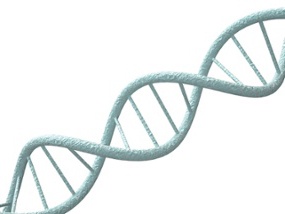Originally published : Fri, November 11, 2016 @ 3:29 PM
Updated : Mon, November 28, 2016 @ 11:31 PM
The secret of life. That’s what Francis Crick and James Watson claimed they had discovered back in Cambridge, England on February 28, 1953. Only 36 and 24-years-old respectively, the two scientists were met with skepticism when they brought up their theory of what the structure of DNA looked like.
Crick and Watson weren’t the only ones in the race to find the DNA structure. Several teams were seeking to resolve this mystery including American Linus Pauling – who incorrectly proposed a triple helix for DNA, as well as Rosalind Franklin and Maurice Wilkins who were using X-ray diffraction in London. This same method was used by Crick and Watson although they were told not to pursue the topic of DNA. Through luck, brilliance, and a bit of deviousness they happened upon the double helix. Using a lecture from Erwin Chargaff, Crick and Watson began to understand that DNA bases come in pairs – adenine (A) always links to thymine (T), and cytosine (C) always linked to guanine (G). This, combined with an x-ray image of a DNA molecule that came from Franklin’s research – which Watson saw without Franklin’s knowledge (I told you they were devious), helped bring the team to building out structures with tin and cardboard. “Photo 51” as Franklin’s x-ray was referred to, was really like a key to a jigsaw puzzle, and helped shape the framework of the double helix. With the introduction of the double helix formation, the pair also provided an idea as to how the genetic code inside all living things was duplicated.
helix. Using a lecture from Erwin Chargaff, Crick and Watson began to understand that DNA bases come in pairs – adenine (A) always links to thymine (T), and cytosine (C) always linked to guanine (G). This, combined with an x-ray image of a DNA molecule that came from Franklin’s research – which Watson saw without Franklin’s knowledge (I told you they were devious), helped bring the team to building out structures with tin and cardboard. “Photo 51” as Franklin’s x-ray was referred to, was really like a key to a jigsaw puzzle, and helped shape the framework of the double helix. With the introduction of the double helix formation, the pair also provided an idea as to how the genetic code inside all living things was duplicated.
So how does it all work? We know that each base is joined to its natural partner – A to T and C to G. This happens by way of a hydrogen bond. They’re held together at the other end by a sugar and phosphate backbone. With the pairing system in place, the two DNA strands coil around each other, like a twisted rope ladder. When a cell divides, an enzyme breaks the hydrogen bonds that connect the base pairs, unzipping the strand down the middle. These can then serve as templates for replication. DNA polymerase tacks new bases onto the letters of each strand. This process results in two new double strands of DNA.
Crick’s and Watson’s discovery has led to the diagnoses of disease, development of drugs, catching criminals and even modifying life. Crazy what one little twisted up rope ladder can do.
Reference: Henderson, Mark, Joanne Baker, and A. J. Crilly. "Chapter 6 - The double helix." 100 Most Important Science Ideas: Key Concepts in Genetics, Physics and Mathematics.

